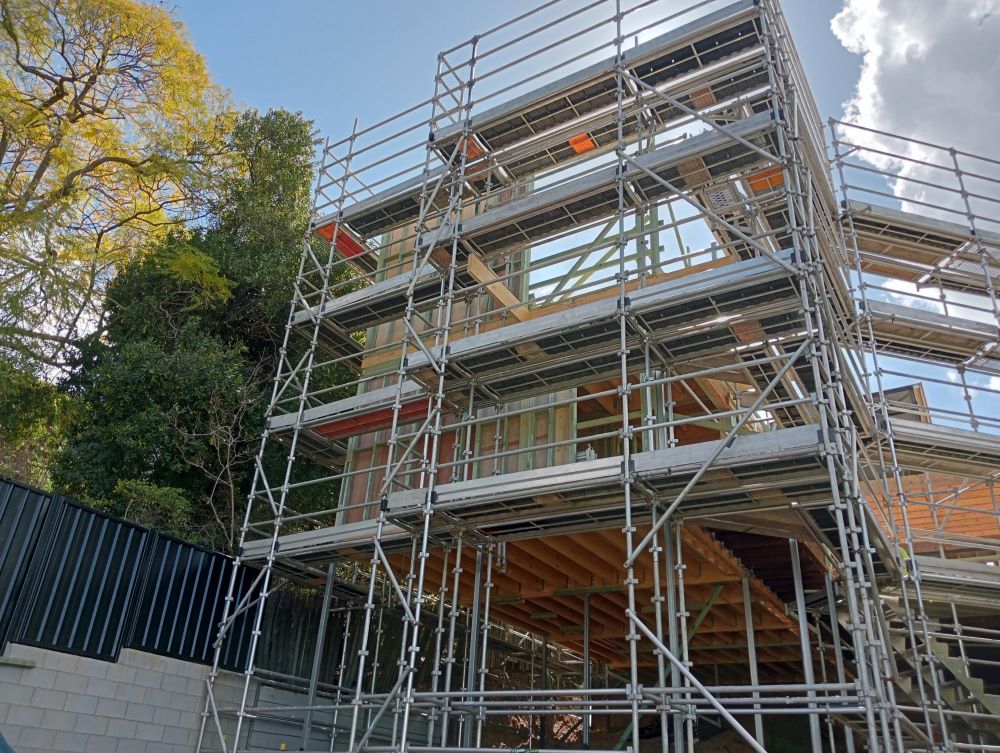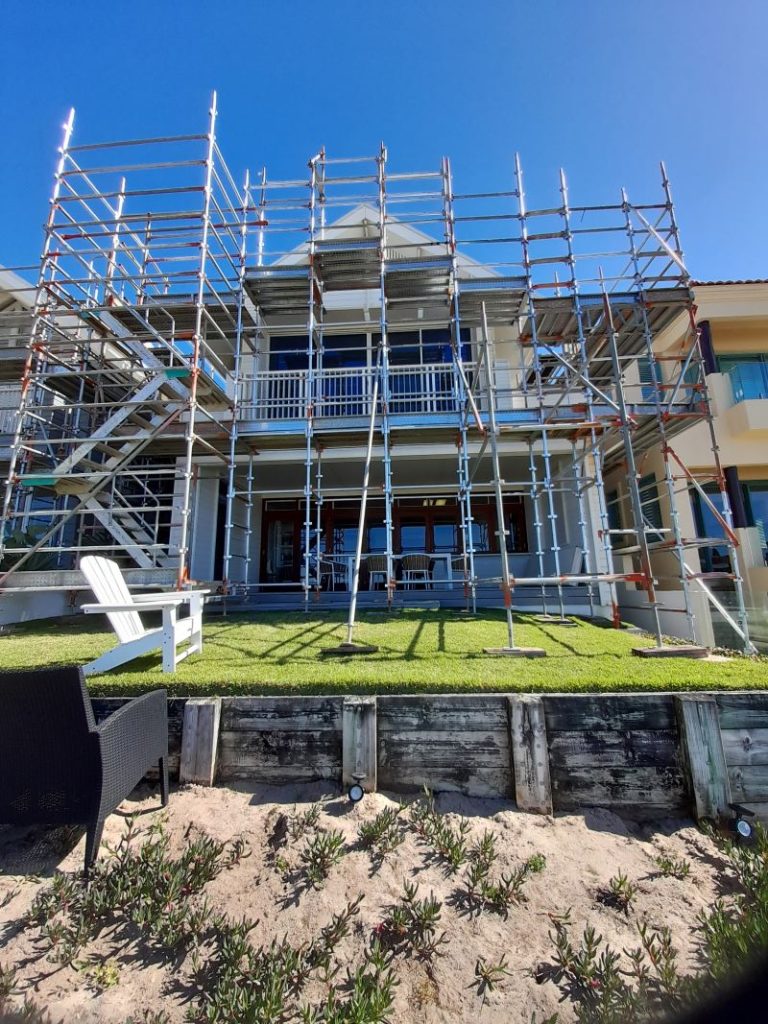Comprehensive Analysis of Aluminium and Steel Scaffolding for Enhanced Construction Efficiency
Choosing the right scaffold for your construction or renovation project is vital for ensuring both safety and productivity. Among the most widely used options are aluminium scaffolding and steel scaffolding. Each material offers distinct characteristics, benefits, and suitability tailored to various project requirements. This detailed guide aims to present an extensive comparison of these two materials, emphasizing their unique features, advantages, and best applications. By understanding these aspects, you can make an informed decision about the most appropriate scaffold for your specific construction needs.
When determining the best scaffold options, it’s essential to understand the unique strengths of aluminium and steel scaffolding. This guide will provide an in-depth examination of these attributes, equipping you with the necessary information to make a knowledgeable choice that aligns with your project’s specific challenges and requirements.

Maximize Your Project Efficiency with Aluminium Scaffolding Benefits
Aluminium scaffolding is highly valued for its lightweight structure and exceptional ease of handling, making it a preferred option for projects that demand frequent relocation and quick assembly. The individual components of aluminium scaffolding are much lighter than their steel counterparts, which significantly enhances transportation and maneuverability on job sites. This feature proves particularly advantageous for contractors operating in confined spaces or those who require ongoing adjustments to scaffolding setups, fostering a smoother workflow and elevating overall efficiency during construction activities.
Moreover, aluminium scaffolding is renowned for its impressive corrosion resistance. This property makes it an outstanding choice for outdoor endeavors or locations with high humidity, ensuring that the scaffold retains its structural integrity and visual appeal over time. The corrosion-resistant nature of aluminium scaffolding contributes to its long-term reliability, making it especially crucial for projects that involve exposure to harsh weather conditions or moisture, thereby safeguarding the safety of workers and the integrity of the project.
The process of setting up and dismantling aluminium scaffolds is typically swift and straightforward due to the design of the components, which are engineered for effortless assembly. This efficiency can lead to considerable time savings on site, particularly for projects with tight timelines. By minimizing the time allocated for setup, construction teams are able to dedicate more focus to completing their tasks effectively and safely, which in turn boosts overall productivity and project success.
Harness the Power of Steel Scaffolding for Unmatched Strength and Stability
Steel scaffolding is recognized for its superior strength and impressive load-bearing capacity, making it a particularly durable option for construction projects that demand robust support structures. This material is specifically designed to handle significant weight loads and withstand challenging conditions, providing a stable and secure platform for workers, even in high-demand environments. Its inherent rigidity and robust nature make it the scaffold of choice for projects involving heavy machinery or substantial building materials, thereby ensuring safety and reliability at elevated heights.
The durability of steel scaffolding offers a significant advantage, especially in extreme weather conditions or high-traffic work areas where scaffolding may experience heavy usage. Unlike lighter materials, steel scaffolding is constructed to resist bending and deformation, ensuring a secure working environment for personnel. This reliability fosters confidence and a strong sense of safety among construction teams, enabling them to perform their tasks effectively and without concern.
Additionally, steel scaffolding is known for its cost-effective longevity. Although the initial expenditure may be higher compared to aluminium, the durability and prolonged lifespan of steel scaffolding render it a financially prudent choice over time. This material is capable of withstanding repeated use, leading to fewer replacements or maintenance requirements, thus resulting in substantial savings in the long run for construction projects.
When weighing the decision between aluminium and steel scaffolding, it is essential to examine the specific requirements of your project. Considerations such as material weight, desired scaffold height and size, and the environmental factors present at the job site will significantly influence your final decision.
Engaging with your scaffold hire company can provide valuable insights, guiding you in selecting the most appropriate option tailored to your project’s specific demands. For more information regarding when scaffolding is necessary and the types of projects that may require it, check out our article on when to hire scaffolding.
Crucial Factors to Evaluate When Choosing Your Scaffold Material
Several key factors must be considered when deliberating the choice between aluminium and steel scaffolding. A thorough understanding of each scaffold material’s strength and durability, weight and portability, and cost and affordability will empower you to make a decision that aligns with your project’s specific needs and constraints, ultimately facilitating a successful construction process.
Evaluating the Strength and Durability of Scaffold Materials
Both aluminium and steel scaffolds are acknowledged for their strength and durability; however, they possess distinct qualities that may impact your selection. Generally, steel scaffolding is regarded as having superior strength and load-bearing capacity in comparison to aluminium scaffolding. The robust nature of steel enables it to endure heavy loads and provide stability in challenging construction scenarios, making it a reliable choice for demanding applications.
In contrast, aluminium scaffolds, while strong and durable, may not effectively support exceptionally heavy loads as well as steel. Therefore, it is critical to thoroughly assess your project’s weight requirements to determine which scaffold material aligns best with your operational needs and safety standards, ensuring a secure and effective work environment.
Examining Weight and Portability Features of Scaffolding Options
Aluminium scaffolds excel in terms of weight and portability. Their lightweight design allows for significantly easier handling and transportation compared to their heavier steel counterparts. This characteristic is especially beneficial for smaller-scale projects or scenarios where scaffolding needs frequent repositioning, as it mitigates physical strain on workers and enhances overall productivity on the job site.
While steel scaffolds may be heavier, they still offer a degree of portability; however, they generally require more effort and manpower for transportation. Understanding the weight and portability aspects relevant to your project will help ensure efficient and safe scaffold utilization throughout your operations, leading to improved job site dynamics and worker satisfaction.
Uncover the Unique Benefits of Aluminium Scaffolding for Construction Projects
Upon assessing various scaffold materials, aluminium scaffolding offers a multitude of unique advantages that make it a preferred selection for diverse construction and renovation endeavors.
Experience Effortless Handling with Lightweight Aluminium Scaffolding Design
A primary advantage of aluminium scaffolding lies in its lightweight design. In comparison to steel scaffolding, aluminium is significantly lighter, which enhances its manageability and transportability. This feature not only accelerates the assembly and disassembly processes but also contributes to a more efficient workflow, ultimately reducing the overall project timeline. Additionally, the ease of handling decreases the risk of worker fatigue-related accidents, thereby improving overall safety and performance on site.
Benefit from Exceptional Corrosion Resistance for Long-lasting Performance
Aluminium scaffolding showcases remarkable corrosion resistance, making it a superior choice across various environmental conditions. Unlike steel, which is prone to rust and degradation, aluminium’s inherent resistance to corrosion ensures it retains its structural integrity even when exposed to moisture or outdoor elements. This characteristic is particularly beneficial for projects carried out in damp or humid conditions, assuring that the scaffold remains safe, stable, and effective throughout its operational lifespan.
Enjoy Streamlined Assembly and Disassembly Processes for Enhanced Efficiency
Another significant advantage of aluminium scaffolding is its quick assembly and disassembly capabilities. The lightweight components, intuitive connectors, and efficient locking mechanisms streamline the setup process. This efficiency proves invaluable in time-sensitive projects or when scaffolding requires frequent relocation. The rapid assembly and disassembly associated with aluminium scaffolding saves both time and labor costs, providing a significant economic advantage for project managers aiming to optimize their resources and budget.

Discover the Unmatched Advantages of Steel Scaffolding for Your Construction Projects
Steel scaffolding presents a variety of benefits that solidify its status as a top choice among contractors and builders when selecting the best scaffold for construction projects.
Unleash the Power of Superior Strength and Load Capacity with Steel Scaffolding
A key advantage of steel scaffolding lies in its unparalleled strength and load capacity. Steel is well-known for its exceptional durability and ability to support substantial weights, making it ideal for projects that require scaffolding to bear significant loads. Steel scaffold systems are meticulously designed to provide workers with a stable and secure platform, thereby ensuring their safety while performing tasks at elevated heights and in challenging conditions.
Experience Remarkable Durability in Extreme Environmental Conditions with Steel
Steel scaffolding exhibits resilience against a range of environmental factors, making it suitable for harsh construction conditions. It can withstand adverse weather elements, including high winds, heavy rains, and drastic temperature changes. This durability guarantees that the scaffold remains stable and secure, establishing a safe working environment for construction teams. Whether tackling projects such as gutter replacements or other tasks that require scaffolding in demanding situations, steel scaffolding is engineered to endure the rigors of the job.
Explore the Cost-Effective Longevity of Steel Scaffolding Solutions
Steel scaffolding is widely recognized for its exceptional longevity and overall cost-effectiveness. Its inherent durability ensures that the scaffold can endure numerous construction projects over extended periods. Unlike other materials, steel scaffolding does not degrade quickly, minimizing the need for frequent replacements or repairs and thus providing substantial savings over time.
To ascertain the most suitable scaffold material for your particular project, it is essential to carefully assess your needs, consult with industry professionals, and take into account safety standards and budgetary constraints.
Follow These Essential Steps to Select the Ideal Scaffold for Your Construction Project
Selecting the right scaffold for your project involves a careful evaluation of your unique requirements. By thoroughly assessing your project specifications, consulting with industry professionals, and considering safety and budget constraints, you can make an informed decision that aligns with your operational goals and enhances overall project efficiency.
Conduct a Comprehensive Assessment of Your Project Requirements for Optimal Scaffold Selection
Begin by evaluating the specific aspects of your project and the tasks that necessitate scaffold support. Essential considerations include the height and configuration of the structure, the anticipated duration of the project, and any specialized requirements that may arise during the construction process.
For instance, scaffolding for an apartment complex will have distinct specifications compared to scaffolding or guard rails required for gutter replacement projects. By gaining a thorough understanding of your project needs, you can determine the ideal type and configuration of scaffold that will best fit your operational objectives, ultimately ensuring on-site safety and efficiency.
Understand the Importance of Professional Consultation for Effective Scaffold Selection
Engaging with experts, such as Cando Scaffolding, is highly advisable when navigating the complexities of scaffold selection. Our extensive industry experience equips you with invaluable insights, assisting you in meeting safety standards and regulatory requirements throughout your project.
Contact us today or request a quote to kickstart the process of selecting the ideal scaffold for your project.
The post-Scaffold Choices: Aluminium vs Steel for Your Project appeared first on https://writebuff.com/.
The Article Aluminium vs. Steel: Choosing the Best Scaffold for Your Project Was Found On https://limitsofstrategy.com


This analysis of aluminium versus steel scaffolding raises important considerations for construction efficiency and safety. Having worked on various projects, I often find that the choice between these materials is influenced not only by their physical properties but also by the specific demands of each project.
Your experiences in the field really highlight what I think is a crucial point about material choice in scaffolding. It’s fascinating how the right material can make a significant difference, not just in terms of efficiency but also in safety and adaptability to the specific site conditions.
You’re spot on about how project specifics really play a huge role in choosing between aluminium and steel scaffolding. I think it’s fascinating how each job brings its own set of challenges that can tip the scales towards one material or the other.
You make a solid point. The choice between aluminium and steel really hinges on what the project calls for. For instance, when weight is a key factor—like in high-rise jobs—aluminium definitely has the edge. But then there’s the issue of durability. Steel can handle some serious wear and tear, especially in harsher environments. It’s fascinating how project specifics can really shape these material choices, isn’t it? What’s been your go-to material based on the projects you’ve tackled?
This is such a timely topic! I love how you’ve broken down the pros and cons of aluminium and steel scaffolding. In my experience working on various projects, I’ve found that the weight factor of aluminium can really make a difference, especially when you’re on a tight schedule. I remember one renovation where the team opted for aluminium scaffolding to save time on assembly, and it really sped things up.
I’m glad you found the discussion on aluminium and steel scaffolding useful. The weight factor you mentioned is crucial, especially when teams need to move quickly. In tight schedules, any advantage in terms of speed can make a significant difference.
It’s interesting to see the breakdown between aluminium and steel scaffolding here. I’ve always leaned towards aluminium for its lightweight nature—it makes a huge difference when you’re moving things around on site. But then there’s the durability factor of steel; I’ve seen projects where the added weight becomes a non-issue due to the structural demands.
You make an excellent point about the balance between lightweight aluminium scaffolding and the solid durability of steel. The choice often comes down to the specifics of the project. When I’ve worked with aluminium scaffolding, I’ve appreciated how much easier it is to transport and set up, especially on tightly packed job sites where maneuverability is key. The reduced weight can definitely save time and energy for the crew, allowing them to move quickly and efficiently.
I get what you’re saying about the lightweight nature of aluminium; it really does make a difference, especially when you’re maneuvering around tight spots on site. I’ve had my fair share of projects where we’ve had to set up and take down multiple times in a day, and it’s nice not to feel like you’re lugging around a ton of extra weight.